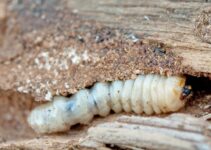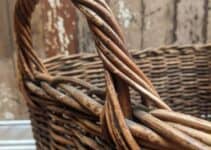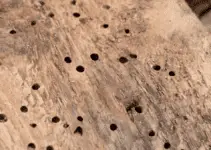A woodworm infestation in your kitchen isn’t any more dangerous than in other rooms. However, treating it could present a challenge due to it being the room where you prepare and cook food.
In this article, we’ll look at whether woodworm in the kitchen is a problem and the best ways to treat the problem.
Where Do Woodworm Live in the Kitchen?
As with anywhere else in the house, woodworm live in wood. In the kitchen, this could be in cabinets, the floor, or furniture. The bugs don’t really discriminate between types of wood, so it won’t make a difference if your kitchen cabinets are solid wood or MDF.
The main appeal for woodworm is a high moisture content, particularly if it’s above 25%. A higher moisture content is fairly common in a kitchen because of cooking, washing up, and so on.
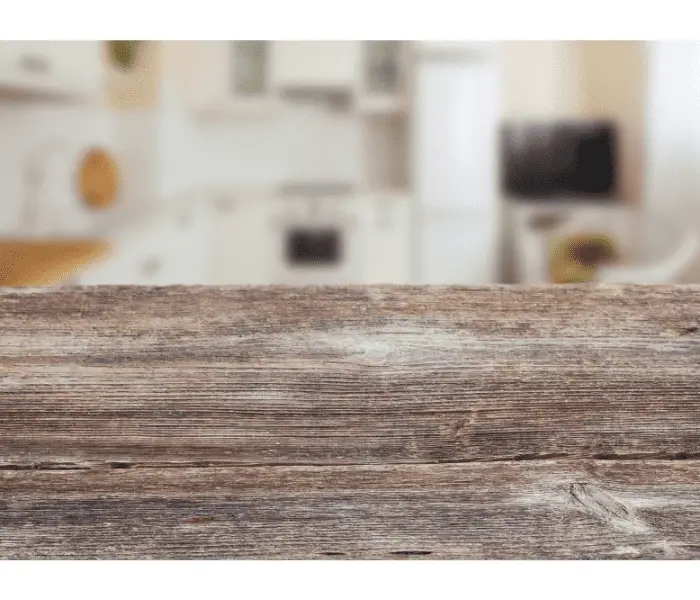
Checking for an Active Infestation
Before rushing out to book an exterminator, it’s worth checking whether the woodworm infestation in your kitchen is actually active. While this isn’t 100% foolproof, it should give you some idea of what needs doing.
The most common sign is holes in wood, but this indicates a past infestation because adult woodworm use these holes to escape the wood and breed.
For example, if you’ve got a solid wood worktop that has woodworm holes in it, the chances are far higher that it was infected during its seasoning or storage phases.
Regardless, the easiest way to check is to rub some beeswax over the holes and monitor them for a few months. If you notice the wax has been chewed through, you likely have an active infestation.
Look for new holes in the wood over the same period.
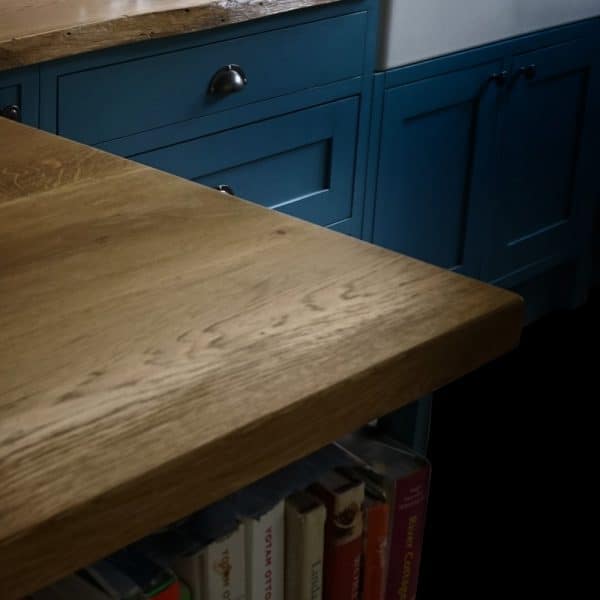
Can Woodworm Get in Food?
In theory, woodworm can get into food if it’s in open containers. However, our food doesn’t appeal to woodworm because, as their name suggests, they eat wood.
Don’t expect to find woodworm in your food if you have an infestation in your kitchen. If you do, it’ll be by coincidence.
Provided your food is all sealed and stored properly, it should be fine. If you notice the signs of a woodworm infestation in your kitchen and want to take extra steps, just seal any bags of food in plastic containers.
Tins and boxes will be absolutely fine as they are.
Is it Dangerous to Use a Kitchen Infested with Woodworm?
There are no real risks to using your kitchen if it’s got a woodworm infestation. Woodworm themselves present no danger to humans.
However, if there’s anything to be concerned about, it’s a parasite that’s linked to woodworm, called scleroderma domesticum.
It’s a species of (wingless) wasp that uses woodworm bore holes to enter wood and prey on the larvae. A sting from it can result in a rash and maybe dermatitis, but this rarely happens.
Also, these wasps don’t live in the wood like woodworm. They enter the wood during breeding season to lay their eggs on the woodworm larvae.
It’s unlikely these wasps will choose a kitchen to lay their eggs in because it’ll be too “busy”. However, it’s worth knowing about them so you can recognise if they’re using your kitchen cabinets for eggs.
Either way, it’s not really dangerous to use a kitchen that has a woodworm infestation. For the most part, woodworm remain living in wood – it’s where they spend the vast majority of their life cycle.
As long as you’re careful with how you store your food, there won’t be any problems.
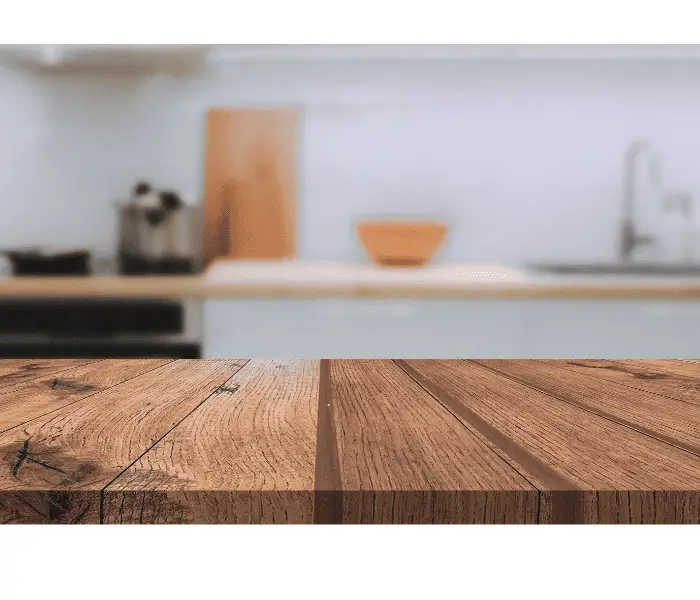
How Do You Treat Woodworm in Kitchen?
Treating woodworm in a kitchen isn’t vastly different to anywhere else in principle. However, you must consider the safety of the treatments and using them around food.
Most woodworm treatments coat wood and can last for up to 20 years. Unsurprisingly, it’s not the best idea to have these on your kitchen counter!
Here are some suggestions for treating woodworm in your kitchen.
1. Flea Powder
A lot of woodworm treatments contain pyrethrin, the same insecticide found in most flea powders. Provided you think you only have a minor woodworm infestation, sprinkling or spraying flea powder on the area can work.
Of course, make sure you remove all food, plates and cutlery from the kitchen first and give it a really good clean down once the treatment has worked.
You also won’t be able to use the kitchen while the powder is down because it’s toxic if ingested.
2. Boron
Boron wood treatment is designed to kill wood boring insects, but it only works on bare wood. It won’t soak into painted or varnished wood, which might limit its use in a kitchen.
Also, it’s still toxic (it’s poison, after all), so don’t use your kitchen for at least a week after spraying this stuff.
3. Household Products
You could try using household products such as vinegar or white spirit. However, these aren’t insecticides and, while unpleasant, won’t kill the woodworm or its larvae.
The most you can expect from these products is that they’ll force the woodworm to the surface, allowing you to kill them another way.
While this isn’t the most practical solution, it at least means not using harmful chemicals in your kitchen. You can use vinegar to check whether the infestation is still active, but you might need something stronger to actually kill them.
4. Call a Professional
It might seem like an obvious solution, but sometimes obvious is the best way to deal with something. Calling a professional exterminator is a good solution in a kitchen because they can advise you on the safest course of treatment for this specific room.
That said, most exterminators will still use chemicals, but at least they’ll tell you how long the room needs to be empty before you can use it again.

Final Thoughts
The bottom line is that a woodworm infestation in your kitchen isn’t dangerous, but it should still be dealt with. To do so, it’s worth calling a professional so you can have the bugs killed in the least risky way for your health.


